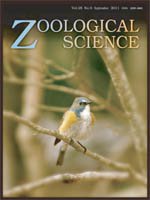Wounds in Xenopus laevis embryos close rapidly, as previously described. In this study, we examined the dependence on extracellular Na and/or Cl- ion concentrations of the closure of wounds in Xenopus embryos inflicted by thermal injury. Wound closure did not occur in normal amphibian medium (100% NAM), while wound areas remarkably decreased either in 10–50% NAM or in 100% NAM lacking Na or Cl-. Similarly, wound areas did not change in a set of Na and Cl- ion concentrations equivalent to those of the humoral fluids of intact Xenopus embryos, but rapid wound closure was induced by decreasing the concentration of either of the two ions. A tangential accumulation of actin cytoskeleton along the wound edge was associated with wound closure. However, a similar actin alignment formed even under the 100% NAM condition, in which wounds did not close, as stated above. The epidermis around the wound edge exhibited ellipse-shaped hypertrophy, and the marginal cells centripetally elongated during wound closure. On the other hand, no distinct morphological changes occurred in 100% NAM, although the epidermis was somewhat thickened. Thus, the morphological changes in the epidermis specific to the low ionic environment most likely play active roles in the wound closure of Xenopus laevis embryos, whereas the tangential actin alignment alone may be insufficient. Taken together, we propose that the wound closure in Xenopus embryos is triggered by a decline in either the extracellular Na or Cl- ion concentration, and that this process is required for the abovementioned changes in the shape of the marginal cells.
How to translate text using browser tools
1 September 2011
Exposure to External Environment of Low Ion Concentrations is the Trigger for Rapid Wound Closure in Xenopus laevis Embryos
Taro Fuchigami,
Takashi Matsuzaki,
Setsunosuke Ihara
ACCESS THE FULL ARTICLE

Zoological Science
Vol. 28 • No. 9
September 2011
Vol. 28 • No. 9
September 2011
actin
embryo
epidermis
low ionic concentration
wound closure
wound healing
Xenopus laevis




